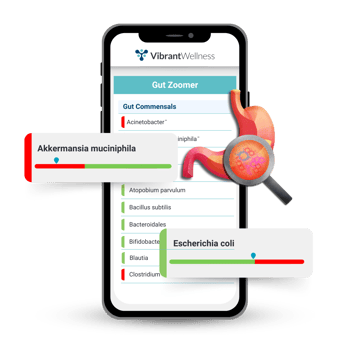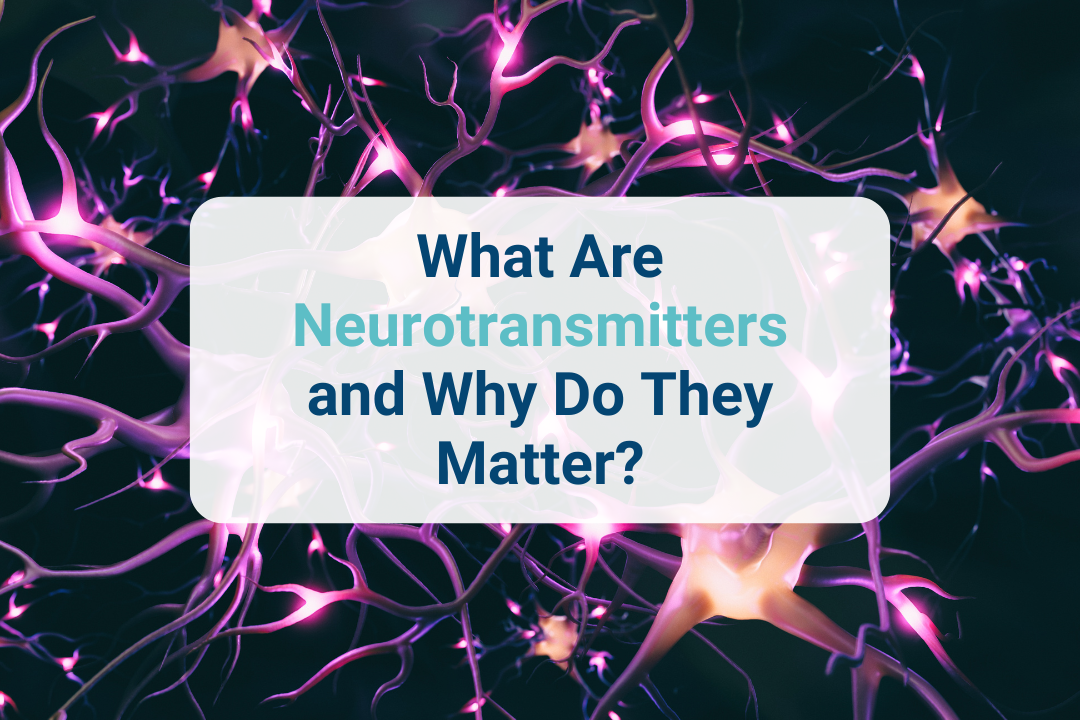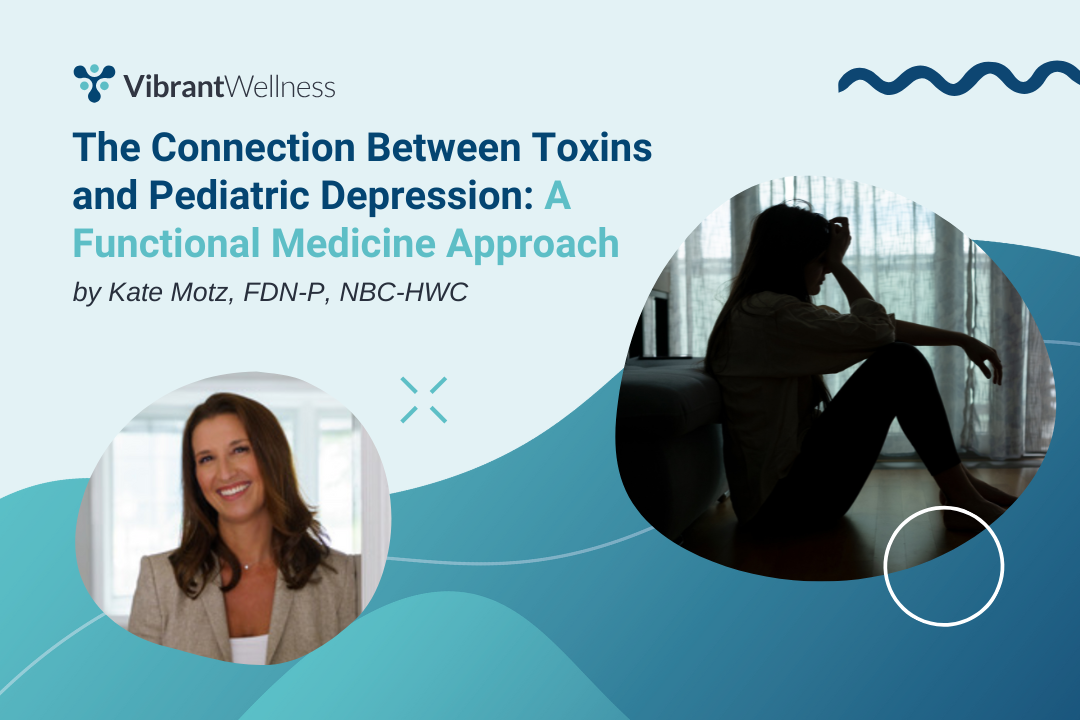PFAS and the Brain: Investigating Links to Anxiety, Depression, and Cognitive Health
PFAS, or per- and polyfluoroalkyl substances, are synthetic chemicals found in thousands of everyday products. While they offer water-resistant and nonstick properties, they also pose serious health risks. These “forever chemicals” persist in the environment and accumulate in the human body, leading to widespread concerns about their long-term effects.
Emerging research suggests PFAS exposure may contribute to anxiety, depression, ADHD, and neurodegenerative diseases like Alzheimer’s and Parkinson’s.
Studies show these chemicals can cross the blood-brain barrier, altering brain function and increasing inflammation. As mental health concerns rise, understanding how environmental toxins impact neurological health is critical.
This blog explores the mechanisms by which PFAS may affect the brain, including gut-brain axis disruption, neurotransmitter dysregulation, and neuroinflammation. We will also provide actionable strategies to mitigate their impact and improve mental, cognitive, and overall health.
Table of Contents
What Are PFAS Chemicals?

PFAS chemicals (per- and poly-fluoroalkyl substances), also known as “forever chemicals,” are persistent environmental pollutants that accumulate in the body, including the brain. These synthetic compounds are used in thousands of everyday products and have been linked to neurotoxicity, disrupting neurotransmitters like dopamine and glutamate.
The widespread use of PFAS in manufacturing over the last 70 years has led to global environmental contamination.1 PFAS are highly resistant to degradation, meaning they can persist in the environment for a long time, wreaking havoc on physical and mental wellness. PFAS is a bond of carbon and fluorine classified as one of the strongest, difficult to break down, and intensified when more than one fluorine atom is present on the carbon atom.
PFAS Exposure in Daily Life
PFAS chemicals are widespread in modern living, making exposure nearly unavoidable. From personal care products to household items and even food packaging, these substances are integrated into countless consumer goods. Understanding where PFAS are found can help individuals take steps to reduce their exposure and limit potential health risks.
PFAS in Consumer Products

PFAS are a class of more than 15,000 chemicals found in thousands of everyday products such as:
- Personal care products (dental floss, cosmetics, menstrual products, sunscreens, lotions, hair products, shaving products)
- Household items (nonstick cookware, clothing, bedding, stain-resistant furniture, food packaging)
- Clothing such as yoga pants, rain jackets, hiking pants, and water- or stain-resistant fabrics
Some states have considered banning PFAS in clothing, with New York and California banning PFAS in clothing and textiles as of January 1, 2025.
Environmental Contamination and Health Risks of PFAS

Exposure to PFAS occurs via air, soil, food, and water and is even present in dust; the chemicals can aerosolize from carpets and upholstery and get inhaled. PFAS earned the "forever chemicals" nickname because they take thousands of years to break down and thus stay in the environment "forever."
This widespread contamination means PFAS can enter the body in various ways beyond inhalation. PFAS can be ingested or absorbed through the skin or gut from water (rain, rivers, and water systems) or leach into food via packaging, pesticides, and fertilizer. PFAS has even been found in rainwater at levels harmful to humans.5 Hand-to-mouth behavior is a significant exposure source among babies, toddlers, and children.
PFAS and Reproductive Health

PFAS are known to have significant health impacts, particularly on women and developing children.
Comprehensive research shows that PFAS is found in pregnant women6, and the placenta is a reasonable target for PFAS.7,8 PFAS accumulates in the placenta and passes the placental barrier, affecting the developing embryo.9 Studies show that PFAS exposure during pregnancy has been linked to10,11:
- Fetal growth restriction and developmental concerns.
- Increased risk of pregnancy complications, including hypertension and preeclampsia.
- Low birth weight and metabolic dysfunction in newborns.
- Weakened immune response, affecting antibody production and vaccine effectiveness.
- Altered liver enzyme function, which may impact detoxification and hormone regulation.
- Increased cancer risk, with some PFAS compounds classified as potential carcinogens.
These findings highlight the urgent need to limit PFAS exposure, especially during pregnancy and early childhood. The Vibrant PFAS Chemical Test offers an innovative lab test for measuring these chemicals in the body, enabling practitioners to design targeted interventions.
Learn more about the effects of PFAS chemicals on hormonal health.
PFAS as a Public Health Concern

PFAS has become a significant public health concern because per- and polyfluoroalkyl substances are synthetic chemicals widely used in various industries for their nonstick, waterproof, and stain-resistant properties. These substances are ubiquitous in water, soil, food, and human tissues. Recent studies highlighted the negative impact of PFAS on the brain, neurotransmitters, and mental health. Research links PFAS exposure to anxiety, depression, and cognitive decline.3
How PFAS Chemicals Affect the Brain
PFAS crosses the blood-brain barrier. Thus, PFAS is a likely risk for neurotoxicity as it accumulates in the brain. Specifically, the brain is a lipid-rich and vascularized organ composed of neurons and glial cells vulnerable to persistent and lipophilic toxicants such as PFAS. The human epidemiological, experimental, and wildlife data evaluation indicates a heightened accumulation of perfluoroalkyl acids in the brain after environmental exposure.
PFAS exposure impacts brain function in several ways, including disrupting the gut-brain axis, altering neurotransmitter activity, and triggering neuroinflammation. These effects may contribute to anxiety, depression, and cognitive decline, making it essential to understand how PFAS interacts with the nervous system.
Gut-Brain Axis Disruption

PFAS exposure with blood-brain-barrier disruption, calcium dysregulation, neurotransmitter alterations, neuroinflammation, oxidative stress, and mitochondrial dysfunction all lead to neuronal impairment.
The gut-brain axis, the bidirectional communication pathway between the gut microbiome and the central nervous system, plays a pivotal role in mental health. Disruptions to this system are contributors to neurological and psychological disorders.
PFAS exposure negatively impacts the gut microbiome, the complex community of microorganisms essential for maintaining gut health and overall wellness. The gut microbiome disruption due to PFAS can weaken the intestinal barrier, allowing harmful substances to leak into the bloodstream, potentially triggering inflammation. These disruptions can impair the production of metabolites like short-chain fatty acids (SCFAs), essential metabolites produced by gut bacteria that play a role in maintaining gut health and regulating immune function.
PFAS molecules may directly interact with gut bacteria, inhibiting their growth or altering their metabolic activity. This disruption further contributes to mental health issues like anxiety and depression by linking gut health to the brain through complex mechanisms.
Let us examine the negative impact on the gut-brain axis:
- Microbiome Imbalance: PFAS may alter the composition of gut bacteria, reducing beneficial strains like Lactobacillus and Bifidobacterium while promoting pathogenic species. This gut microbiome imbalance usually leads to increased intestinal permeability, known as a "leaky gut."
- Decrease in kidney function. Gut microbiome change impacted kidney functioning, and a higher PFAS burden was associated with reduced kidney function.12
- Systemic Inflammation: An imbalanced gut microbiome and unhealthy gut lining allows toxins and inflammatory molecules to enter the bloodstream, triggering systemic inflammation, which can cross the blood-brain barrier, influencing brain function and may trigger anxiety and depression.
- Mental Wellness: The gut microbiome manufactures about 90 percent of the body's supply of serotonin, which influences mood, and this neurotransmitter is critical for mood regulation. Disruptions in gut health due to PFAS exposure may directly affect serotonin production and neurotransmitter imbalances.
Neurotransmitter Dysregulation

Research showed that this chemical exposure causes neurotoxicity by disrupting neurotransmission, specifically dopamine and glutamate systems.3 The increased glutamate levels in the hippocampus and decreased dopamine in the whole brain after PFAS exposure are very concerning. These systems are involved in neurodegenerative diseases and psychiatric illnesses. Neuroscience research indicates anxiety disorders arise from a dysfunction in the brain circuit modulation that regulates emotional responses.4
PFAS chemicals may interfere with neurotransmitter production and functionality, such as:
- Dopamine: Disruptions in dopamine signaling may impair motivation, focus, and reward processing, further contributing to mental health challenges. A study found that PFOS ( a type of PFAS) exposure decreased dopamine levels in Northern leopard frogs.15
- GABA is an inhibitory neurotransmitter central to calming the nervous system and regulating emotional responses. Exploring the concept of anxiety disorders as a disturbance of emotional response regulation is a useful one. PFAS exposure may impair GABA activity, leading to heightened anxiety and stress responses.
- Serotonin: PFAS is linked to reduced serotonin levels, which can manifest as anxiety, depression, and emotional instability.16
PFAS chemicals may interfere with neurotransmitter balance by inducing oxidative stress, which damages cellular function and disrupts key pathways involved in mood regulation. This disruption, particularly in serotonin and dopamine signaling, has been linked to anxiety-related behaviors. Additionally, PFAS exposure may alter dopaminergic signaling pathways and contribute to oxidative stress within the brain.13
Anxiety involves numerous brain pathways, activity amongst multiple neurotransmitters, interacting and modulated by synaptic relays. The role of gamma-aminobutyric acid (GABA), the inhibitory neurotransmitter, has long been regarded as central to the regulation of anxiety.4
However, GABA is not the only neurotransmitter involved in anxiety. Neurotransmitters like dopamine, and serotonin are also critical for regulating mood, cognition, and emotional responses.
PFAS Exposure and Depression

Research suggests a U-shaped relationship between PFAS and depression.14 Low levels of PFAS are associated with higher depression scores, possibly due to disruptions in hormonal balance impacted by PFAS exposure. Conversely, high levels of PFAS are linked to increased depression risk, potentially due to inflammation pathways and the disruption of metabolic processes.
Neuroinflammation and Cognitive Decline

PFAS exposure has been linked to chronic inflammation in the brain, which plays a key role in cognitive decline and neurodegenerative diseases. Understanding how PFAS contributes to neuroinflammation can shed light on its potential impact on conditions such as ADHD, Alzheimer's disease, and Parkinson’s disease.
PFAS is neurotoxic and associated with chronic and age-related psychiatric illnesses and neurodegenerative diseases.3 Mental health and cognitive decline are growing concerns, and practitioners benefit from understanding how environmental toxins like PFAS may contribute.
Cognitive health and PFAS Exposure
Exposure to PFAS during critical developmental timelines, particularly in children, may impact brain development and lead to long-term cognitive and behavioral issues.17 Some long-term potential impacts include reduced cognitive function, altered behavior patterns, and increased risk of neurodevelopmental disorders like ADHD or autism spectrum disorder.
Neuroinflammation and PFAS
The alteration of dopaminergic and serotonergic neurotransmission by PFAS exposure may also explain the mechanism for functional deficits attributed to ADHD. One study showed that hyperactivity, one of the key symptoms of ADHD, has been demonstrated in animal models exposed to PFAS. The results of the study suggest that PFAS may impact the pathway involved in the treatment of ADHD symptoms (dopamine). 18
Other research indicates PFAS exposure causes mitochondrial dysfunction and increased cell death, linking PFAS to increased risk of neurodegenerative diseases such as Alzheimer's disease and Parkinson's disease.3 Chronic inflammation is a hallmark of cognitive impairment and neurodegenerative diseases.
PFAS exposure contributes to neuroinflammation through several factors:
- Oxidative Stress: PFAS increases the production of reactive oxygen species (ROS), causing oxidative damage to brain cells.
- Inflammatory Pathways: Elevated inflammatory markers, such as cytokines, have been found in individuals with high PFAS exposure. These cytokines damage neurons and disrupt neural networks.
- Cognitive Decline: Heightened levels of inflammation and oxidative stress can accelerate processes associated with cognitive decline, including focus issues, cognitive decline, memory loss, and impaired executive function.
Gaining Insights with Specialized Labs
 Understanding the impact of PFAS on mental and cognitive health starts with assessing exposure and its effects on key biological systems. Advanced lab testing can help identify toxic burdens and guide personalized interventions for better health outcomes.
Understanding the impact of PFAS on mental and cognitive health starts with assessing exposure and its effects on key biological systems. Advanced lab testing can help identify toxic burdens and guide personalized interventions for better health outcomes.
Assessing PFAS Exposure with the Vibrant Wellness PFAS Chemical Test
The Vibrant PFAS Chemical Test detects specific PFAS compounds, offering a comprehensive view of an individual's toxic burden. By identifying PFAS exposure, patients gain insight into environmental factors affecting their health.
 Assessing PFAS Exposure Impact on Neurotransmitters with the Vibrant Neurotransmitters Panel Test
Assessing PFAS Exposure Impact on Neurotransmitters with the Vibrant Neurotransmitters Panel Test
The Neurotransmitters Panel analyzes key neurotransmitters, such as serotonin, dopamine, norepinephrine, and GABA, vital for mood and cognition. It offers insights into the biochemical balance of the nervous system, identifying imbalances that may affect mental health. This information aids in creating personalized treatment plans to enhance neurological function and well-being.
Case Study: PFAS Exposure and Its Impact on Mental and Physical Health
Linda is a 42-year-old female dealing with chronic fatigue, anxiety, brain fog, and difficulty concentrating. She could not figure out why she was experiencing these symptoms, and conventional labs offered very little beneficial insight. The functional medicine approach for the toxic burden of PFAS was Linda's first step to gaining insight.
Clinical Findings
Vibrant Wellness PFAS Chemical Test revealed high levels of per- and polyfluoroalkyl substances (PFAS), known to disrupt endocrine function, trigger neuroinflammation, and impair detoxification pathways.
Neurotransmitter panel testing revealed low levels of serotonin, dopamine, and GABA.
Linda's personalized treatment plan aimed to enhance cognitive functioning, support detoxification, and restore energy levels.
Dietary modifications
- Eating more antioxidant-rich foods such as organic berries, cruciferous vegetables, and leafy greens supports cellular repair and reduces oxidative stress.
- Emphasis on fiber-rich foods, including organic flaxseeds and chia seeds, to promote toxin elimination via the digestive system.
- Choice of distilled water or reverse osmosis to minimize further PFAS exposure.
 Detoxification Strategies
Detoxification Strategies
- Daily dry brushing and infrared sauna therapy to enhance lymphatic drainage and toxin elimination through the skin.
- Epsom salt baths aid in detoxification via the skin and support magnesium levels.
Targeted Supplementation
- Activated charcoal and bentonite clay are helpful in binding and eliminating PFAS from the body.
- Vitamin C and N-acetylcysteine (NAC): useful to support glutathione production and reduce neuroinflammation.
- Omega-3 Fatty Acids: useful to reduce neuroinflammation and support cognitive function.
- Methylated B Vitamins: for enhancing energy production and neurotransmitter synthesis.
- Glutathione: to improve liver detoxification and reduce oxidative stress.
 Lifestyle Interventions:
Lifestyle Interventions:
- Daily movement, such as yoga, pilates, and walking, to improve circulation and lymphatic flow.
- Incorporating meditation and deep breathing to reduce anxiety and support nervous system regulation.
- Prioritizing sleep hygiene, reducing blue light exposure, and getting to bed before 11 pm.
Within a few months, Linda reported improved focus, decreased anxiety, mood regulation, and improved energy levels.
Assessing PFAS Exposure Impact on Gut Microbiome with the Vibrant Wellness Gut Zoomer Test
It is essential to check gut health when dealing with PFAS or other toxic exposures.
The Vibrant Wellness Gut Zoomer assesses gut microbiome composition, inflammation, immune response, and permeability. Key markers include butyrate (a short-chain fatty acid associated with mental resilience) and pathogenic bacteria that may contribute to mood disorders. It also provides a breakdown of one's beneficial bacteria ratios, which is very helpful.
Case Study: PFAS Exposure on Adolescent with Attention Deficit Disorder (ADD)
Paul, a 14-year-old male with difficulty focusing, is impulsive and has low motivation. In addition, his symptoms include fatigue, anxiety, digestive issues, skin rashes, and frequent infections. His diet is high in processed foods with limited fiber and phytonutrients. Paul has daily exposure to nonstick cookware, plastic containers, and fast food packaging.
Clinical Findings
Vibrant Wellness PFAS Chemical Test: showed elevated levels of Perfluorooctanoic acid (PFOA) and Perfluorooctane sulfonate (PFOS).
Gut Zoomer Findings: gut dysbiosis: low beneficial bacteria, elevated E. coli, clostridium species levels, high fecal zonulin and calprotectin, and low butyrate production.
Customized Plan:
- Detoxification Support: N-acetylcysteine and Vitamin C
- Gut Restoration: Probiotic, zinc carnosine
- Dietary Adjustments: Transition to an organic, whole-food diet free of processed foods and PFAS exposure sources
- Cognitive & Behavioral Support: Omega-3, Magnesium and B vitamins
Three Month Follow-Up Progress: Improvements in focus, digestion, and energy levels.
Practical Strategies to Support Patients with Excessive PFAS Exposure

Human exposure to PFAS occurs through ingestion, inhalation, and dermal contact.1 Dietary intake of contaminated food and water represents the largest source of exposure for most adults.1 Therefore, looking into healthier ways to mitigate exposure is essential.
Nutritional Interventions
- Antioxidant-Rich Foods: Organic Berries, Citrus fruits, Broccoli, Cauliflower
- Detox-Supportive Foods:
Garlic, Turmeric, Leafy green vegetables like Swiss Chard, Kale - Healthy Fats: Wild salmon, organic walnuts, flaxseeds, and chia seeds
Lifestyle Changes
- Water Filtration—reverse osmosis, or distillation, to remove these chemicals.
- Avoid highly packaged/processed foods.
- Test municipal and private well water for PFAS.
- Be aware of contamination levels in the community.
- Determine if clothing is PFAS-free; look for PFAS-free labels.
- Regular exercise supports lymphatic drainage, improves circulation, and enhances toxin elimination.
- Incorporate yoga, meditation, and deep breathing to reduce stress.
Supplementation
- Omega-3 Fatty Acids help reduce neuroinflammation and support cognitive health.
- Probiotics help restore gut microbiome balance and improve gut-brain communication.
- Antioxidants—Vitamin C and N-acetylcysteine minimize oxidative stress and support detoxification.
- Ashwagandha may help regulate stress responses.
- Activated Charcoal and Bentonite Clay bind and eliminate PFAS.
- Methylated B Vitamins enhance energy production and neurotransmitter synthesis.
The Bottom Line
PFAS chemicals pose a significant threat to mental health and cognitive function through mechanisms such as gut-brain axis disruption, neurotransmitter dysregulation, and neuroinflammation.
Reducing exposure is essential—not just for individual health but for broader public safety. Advocate for the state legislature to ban PFAS discharges into groundwater, lakes, and rivers from being used in biosolid fertilizer and artificial turf, and ask them to consider adopting laws to ban PFAS from apparel and textiles.
On a personal level, minimizing exposure means making informed choices, such as opting for PFAS-free versions of common consumer products like food packaging, textiles, personal care products, and pesticides.
But awareness alone isn’t enough. The Vibrant PFAS Chemical Test empowers practitioners to identify toxic burdens and create personalized care plans, especially when incorporating the Neurotransmitter Panel and Gut Zoomer.
With the data-backed insights, practitioners can recommend targeted nutrition, lifestyle, and nutraceutical strategies, to help patients mitigate the impact of PFAS on their total wellness. Utilizing these specialized lab tests will address the hidden toxins impacting mental and cognitive health and pave the way for a healthier future.
About the Author
References:
-
Starnes HM, Rock KD, Jackson TW, Belcher SM. A critical review and meta-analysis of impacts of per- and polyfluorinated substances on the brain and behavior. Front Toxicol. 2022;4:881584. doi:10.3389/ftox.2022.881584
-
Running L, Cristobal JR, Karageorgiou C, Camdzic M, Aguilar JMN, Gokcumen O, Aga DS, Atilla-Gokcumen GE. ACS Chem Neurosci. 2024;15(24):4568-4579. doi:10.1021/acschemneuro.4c00652
-
Brown-Leung JM, Cannon JR. Neurotransmission targets of per- and polyfluoroalkyl substance neurotoxicity: mechanisms and potential implications for adverse neurological outcomes. Chem Res Toxicol. 2022;35(8):1312-1333. doi:10.1021/acs.chemrestox.2c00072
-
Nuss P. Anxiety disorders and GABA neurotransmission: a disturbance of modulation. Neuropsychiatr Dis Treat. 2015;11:165-175. doi:10.2147/NDT.S58841
-
Cousins IT, Johansson JH, Salter ME, Sha B, Scheringer M. Outside the safe operating space of a new planetary boundary for per- and polyfluoroalkyl substances (PFAS). Environ Sci Technol. 2022;56(16):11172-11179. doi:10.1021/acs.est.2c02765
-
Wikström S, Lin PI, Lindh CH, Shu H, Bornehag CG. Maternal serum levels of perfluoroalkyl substances in early pregnancy and offspring birth weight. Pediatr Res. 2020;87(6):1093-1099. doi:10.1038/s41390-019-0720-1
-
Szilagyi JT, Avula V, Fry RC. Perfluoroalkyl substances (PFAS) and their effects on the placenta, pregnancy, and child development: a potential mechanistic role for placental peroxisome proliferator-activated receptors (PPARs). Curr Environ Health Rep. 2020;7:222-230.
-
Blake, B.E.; Fenton, S.E. Early life exposure to per- and polyfluoroalkyl substances (PFAS) and latent health outcomes: A review including the placenta as a target tissue and possible driver of peri- and postnatal effects. Toxicology 2020, 443, 152565
-
McAdam, J.; Bell, E.M. Determinants of maternal and neonatal PFAS concentrations: A review. Environ. Health 2023, 22, 41
-
Cai, D.; Li, Q.-Q.; Chu, C.; Wang, S.-Z.; Tang, Y.-T.; Appleton, A.A.; Qiu, R.-L.; Yang, B.-Y.; Hu, L.-W.; Dong, G.-H.; et al. High trans-placental transfer of perfluoroalkyl substances alternatives in the matched maternal-cord blood serum: Evidence from a birth cohort study. Sci. Total Environ. 2020, 705, 135885.
-
Gützkow, K.B.; Haug, L.S.; Thomsen, C.; Sabaredzovic, A.; Becher, G.; Brunborg, G. Placental transfer of perfluorinated compounds is selective—A Norwegian Mother and Child sub-cohort study. Int. J. Hyg. Environ. Health 2012, 215, 216–219
-
Hampson HE, Li S, Walker DI, et al. The potential mediating role of the gut microbiome and metabolites in the association between PFAS and kidney function in young adults: A proof-of-concept study. Sci Total Environ.2024;176519. doi:10.1016/j.scitotenv.2024.176519
-
Mariussen E. Neurotoxic effects of perfluoroalkylated compounds: mechanisms of action and environmental relevance. Arch Toxicol. 2012;86(9):1349-1367. doi:10.1007/s00204-012-0822-6
-
Hampson HE, Li S, Walker DI, et al. The potential mediating role of the gut microbiome and metabolites in the association between PFAS and kidney function in young adults: A proof-of-concept study. Sci Total Environ.2024;954:176519. doi:10.1016/j.scitotenv.2024.176519
-
Foguth RM, Flynn RW, de Perre C, et al. Developmental exposure to perfluorooctane sulfonate (PFOS) and perfluorooctanoic acid (PFOA) selectively decreases brain dopamine levels in Northern leopard frogs. Toxicol Appl Pharmacol. 2019;377:114623. doi:10.1016/j.taap.2019.114623
-
Yi W, Xuan L, Zakaly HMH, et al. Association between per- and polyfluoroalkyl substances (PFAS) and depression in U.S. adults: A cross-sectional study of NHANES from 2005 to 2018. Environ Res. 2023;238(Pt 2):117188. doi:10.1016/j.envres.2023.117188
-
Currie SD, Wang J-S, Tang L. Impacts of PFAS exposure on neurodevelopment: A comprehensive literature review. Environments. 2024;11(9):188. doi:10.3390/environments11090188
-
Kim JI, Kim BN, Lee YA, et al. Association between early-childhood exposure to perfluoroalkyl substances and ADHD symptoms: A prospective cohort study. Sci Total Environ. 2023;879:163081. doi:10.1016/j.scitotenv.2023.163081
Regulatory Statement:
The information presented in case studies have been de-identified in accordance with the HIPAA Privacy protection.
The general wellness test intended uses relate to sustaining or offering general improvement to functions associated with a general state of health while making reference to diseases or conditions. This test has been laboratory developed and its performance characteristics determined by Vibrant America LLC and Vibrant Genomics, a CLIA-certified and CAP-accredited laboratory performing the test. The lab tests referenced have not been cleared or approved by the U.S. Food and Drug Administration (FDA). Although FDA does not currently clear or approve laboratory-developed tests in the U.S., certification of the laboratory is required under CLIA to ensure the quality and validity of the test.
 By
By




